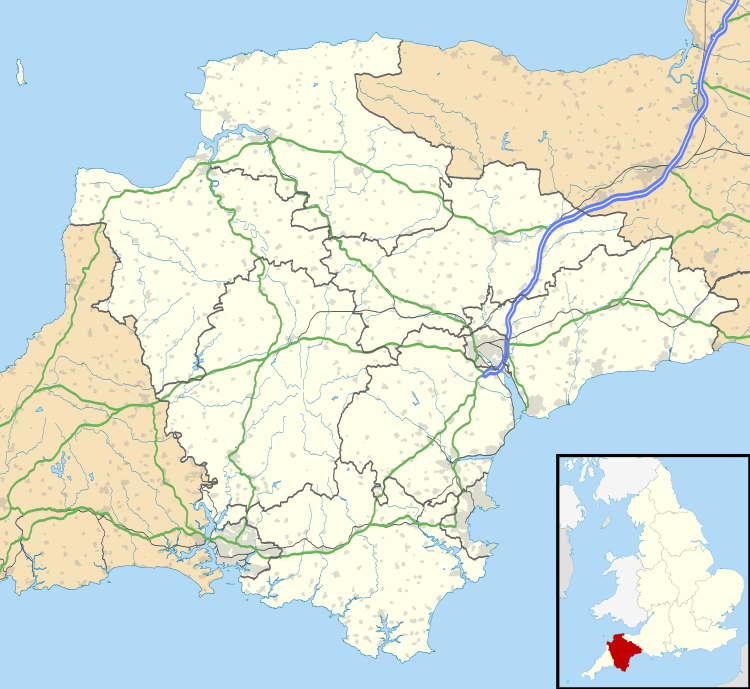Lynmouth Foreland Lighthouse
 Lynmouth Foreland Lighthouse in 2007 | |
 Devon | |
| Location |
Lynmouth Devon England |
|---|---|
| Coordinates | 51°14′44″N 3°47′12″W / 51.24556°N 3.78667°WCoordinates: 51°14′44″N 3°47′12″W / 51.24556°N 3.78667°W |
| Year first constructed | 1900 |
| Automated | 1994 |
| Construction | brick tower |
| Tower shape | cylindrical tower with balcony and lantern attacged to 1-storey keeper's house |
| Markings / pattern | white tower and lantern |
| Height | 15 m (49 ft) |
| Focal height | 67 m (220 ft) |
| Current lens | 1st order 920mm focal length, dioptric, 8 panels in 2 groups of 4 asymmetrical |
| Intensity | 150,000 candela |
| Range | 18 nmi (33 km; 21 mi) |
| Characteristic | Fl (4) W 15s. |
| Admiralty number | A5590 |
| NGA number | 6208 |
| ARLHS number | ENG 044 |
| Managing agent | National Trust[1] |
Lynmouth Foreland Lighthouse (also called the Countisbury Foreland Lighthouse, after the nearby village) is located on Foreland Point. It was completed in 1900 to assist vessels passing through the Bristol Channel, and is a round brick tower painted white. The light is 67 metres (220 ft) above the high tide, and flashes 4 times every 15 seconds. Electricity was brought to the lighthouse in 1975, and it was automated in November 1994.[2] The lighthouse keeper's cottage is now a National Trust holiday cottage. Porpoise and sea birds can be spied from its windows, and deer often shelter in the combe down to the lighthouse.
See also
References
- ↑ Lynmouth Foreland (Foreland Point) The Lighthouse Directory. University of North Carolina at Chapel Hill. Retrieved May 2nd, 2016
- ↑ "Lynmouth Foreland Lighthouse". Trinity House.
External links
| Wikimedia Commons has media related to Lynmouth Foreland lighthouse. |
This article is issued from Wikipedia - version of the 7/11/2016. The text is available under the Creative Commons Attribution/Share Alike but additional terms may apply for the media files.